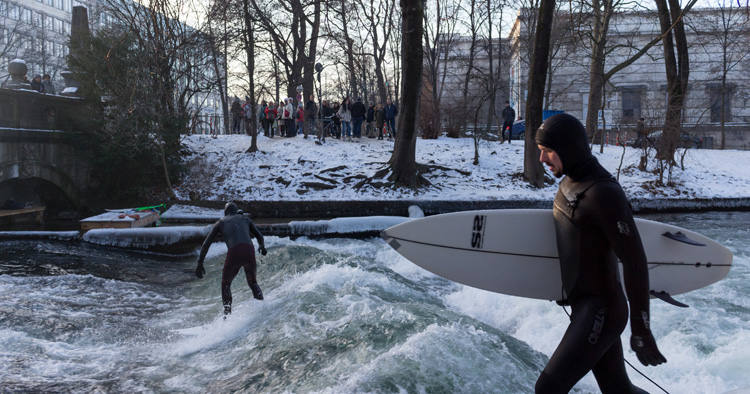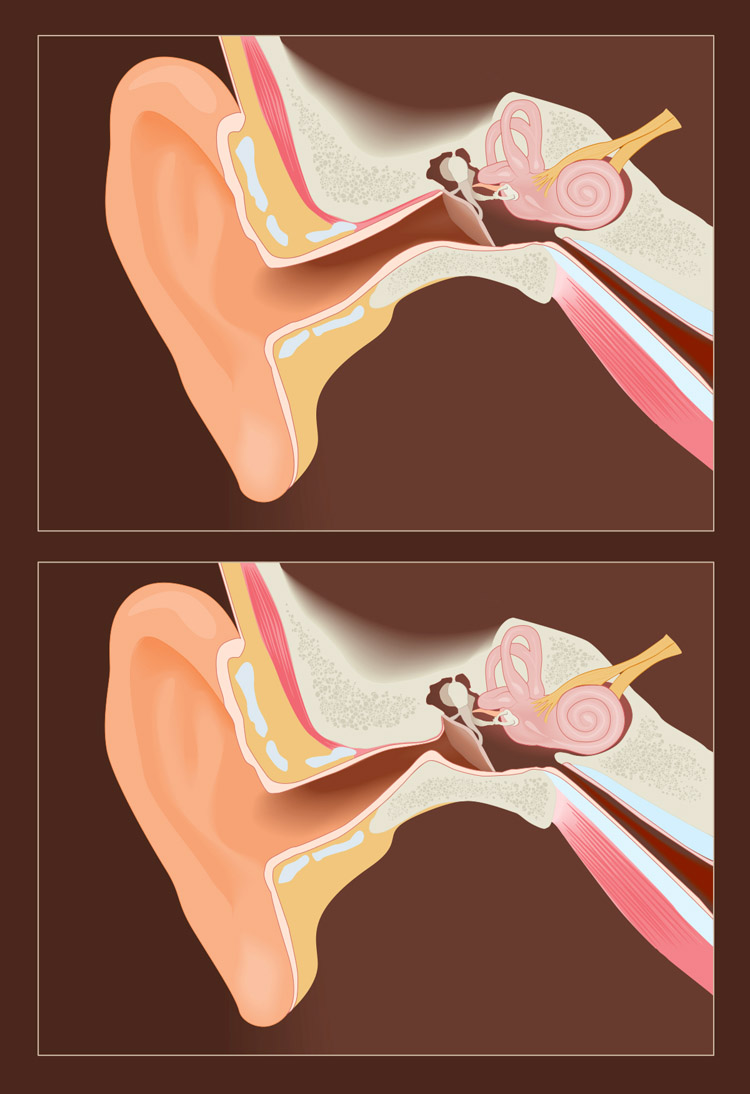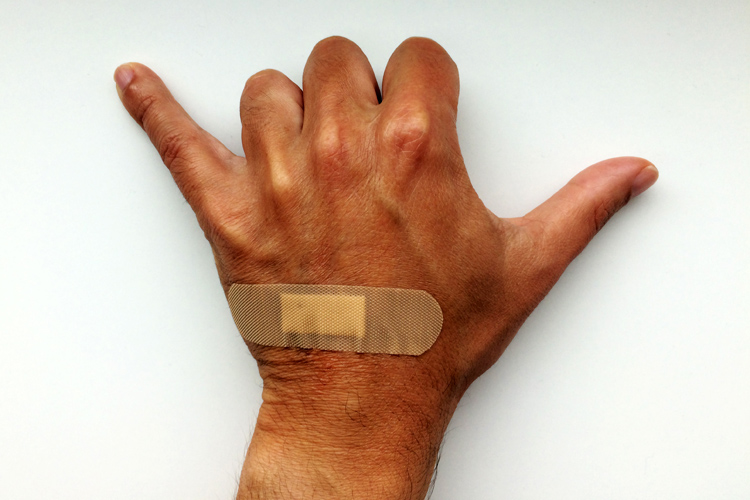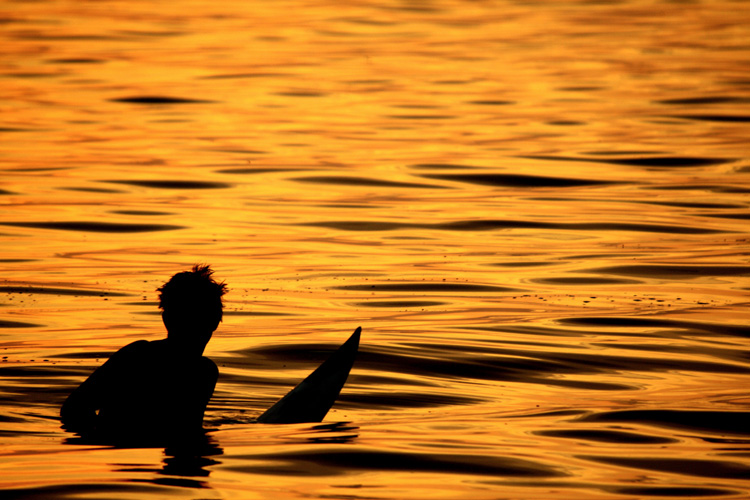Exostosis is a condition that affects surfers exposed to cold air and water temperature. Read a real-life story told by someone who ended up in an operating room.
My name is Luis, and I am 40 years old.
I started surfing in the north of Portugal between 1989 and 1991. My favorite surf breaks are exposed to North Atlantic swells, where the prevailing wind direction is NNW and NW.
When I started surfing with a heavy 6'2'' Mike Davis surfboard, I was around 13 years old, and all I wanted was to learn fast.
There were no smartphones and online surf forecasts - it was just you, your friends, and endless surfing dreams.
Before going to college for five or six years, I don't recall hearing about surf-related diseases.
All I could remember were the first waves, the smell of surf wax, and having trouble spotting the incoming waves without my prescription glasses.
From a surfing perspective, the north of Portugal was - and still is - uncharted territory. There weren't a lot of surfers in the water, and the lineups were relatively easygoing.
When compared to the popular breaks located in the center and south of the country, the only differences were the temperature of the air and water.
So, at my home and "spiritual" surf breaks - Porto/Matosinhos and Mindelo - the water was cold, and the northern winds were intense and chilly.
I stopped surfing during my university years. Because I had moved to an inland campus, the surf was 37 miles (60 kilometers) away, and that seemed like an impossible mission.
When I got back to my hometown, Porto, in my early 20s, I learned to sail and spent a couple of years training in the Vaurien and Laser sailing classes.
I loved it a lot, but then it started to get too serious and time-consuming, and I decided to quit.
That's when one of my oldest friends asked me: why don't you repair your surfboard and get back to surfing?
That question changed my life for the better. I got hooked again on catching waves, and I never stopped.
I built my quiver and even founded SurferToday, initially as a hobby and later as an entrepreneurial project.
I believe I only heard about exostosis, also known as Surfer's Ear, in my early 30s.
Unfortunately, and I have to admit it, I thought it was only a problem that affected others. And I couldn't be more wrong.

Phase One | There's Something Wrong With My Right Ear
Probably once I hit 35 or 36, I started noticing changes in the natural "behavior" of my ears.
I had enjoyed several legendary winter swells and spent countless hours outside in the cold, waiting for and analyzing the surf before paddling out.
Where I live, when the surf is pumping, I scan the ocean with my right ear facing north and my left ear facing south; the same orientation applies when I sit on my surfboard waiting for the waves.
The average water temperatures in the Porto region range from a minimum of 56.9 °F (13.8 °C) in February and March and a maximum of 64.5 °F (18.1 °C), so basically the end of winter and end of summer, respectively.
The average air temperatures for my home breaks range from a minimum of 50 °F (10 °C) in January and a maximum of 68 °F (20 °C) in July.
In other words, we could say Porto is an exciting, trendy, World Heritage Site, surf-driven European city, but it is definitely not a tropical surfing destination.
So, in my mid-30s, I read about Surfer's Ear, but I didn't know it was about to hit me and send me to a hospital bed a few years later.
All I felt was a small amount of water gurgling and getting trapped predominantly in my right ear. For the first time, I thought I might need to visit an otorhinolaryngologist.
The northern winds and the cold waters were to blame.
Phase Two | Colds, Flus, and Otitis
I never liked health professionals, even though I truly appreciate their work. But like many men, I also try to avoid visiting doctors and hospitals as much as possible.
But when several consecutive winter weeks began taking a toll on me, I knew it was time to hear the unpleasant truth from the specialists.
Yes, surfer, an unwanted benign bone tumor is growing in your ear.
My prompt question was: do I need to undergo surgery? Sooner or later, she said. And then I left, with my head down and slightly worried about my options.
Phase Three | Difficulty In Hearing, Headaches, and Clicks In Ear When I Swallow
After my first visit to the otorhinolaryngologist, I decided to read more about exostosis, and I started taking measures to protect my ears, especially during wintertime.
I tried earplugs, and at first, I didn't like them because they made me hear my breathing, and I felt like I was losing a bit of balance on the surfboard.
But I knew I had to continue using them. And, as time went by, they were not a problem anymore. I got used to the silicone plugs. But the damage had already been done.
I was 36 or 37, and sooner or later, I would have to challenge my inner demons.
Phase Four | Have You Undergone Surgery? Did It Hurt? Which Surgeon Did You Have?
One day, I was surfing a groundswell at my local peak and spotted a fellow surfer with a complex ear-protecting system. I decided to ask him about it, and he told me he had just been operated.
"How did it go? Did it hurt?" I asked. "No, it was great. I had no pain, and I am quite relieved," he replied.
My immediate question was: "Who was the surgeon? Can you tell me his name?"
For the first time, I found comfort in someone else's experience. I had already heard about complicated and painful surgeries, and I was definitely scared of them.
But this surfer was really pleased with the outcome.
"His name is Doctor Abílio Leonardo," he said. "It was a fantastic experience, and I strongly recommend him if you plan on doing it."
I was still surfing my first waves that day, but I made sure my mind would not forget the specialist's name: Doctor Abílio Leonardo.
Phase Five | Reaching Out The Doctor
A few days after hearing that surfer's recommendation, I visited the recommended doctor for the first time.
He analyzed both ears, and the verdict was a Level 3 exostosis (on a scale from 1 to 10) in my left ear and a Level 7 in my right "northern" ear.
The doctor told me I could live comfortably and healthily with a Level 3 exostosis, but I should treat my strongly exposed right ear canal.
I acquiesced. Time to man up. When should we do it? "Let's do it next year, Luís. Right after the end of summer?" Alright, let's go for it.

Phase Six | The Summer Before The Surgery
Three months before a frightening event is always something you can cope well with. So, I left my mind free of fears and pressure - I just went surfing when I could and tried to relax.
In fact, I really wanted to do it. I was positively looking forward to bringing my right ear back to normal life.
And I also became a surf earplug preacher. I told everyone I knew and met that they should take precautions while they still could.
"Are you in your late 20s? Don't make the same mistake I did. Have you hit 30? Never forget your favorite ear protection plugs.
They will save you from an unwanted and expensive surgery."
There were parts of my brain that were trying to forget that I had an appointment with the first general anesthesia of my entire life.
And needles have never been my forte.
With a scary surgery scheduled for October 3, I surfed through summer like a seriously ill person enjoying a sunny day - appreciating every little wave and loving each ride as if it were the last.
Phase Seven | The Hours Before The Surgery And The Moment Of The Truth
Forty hours before the Surfer's Ear surgery, I was a confident and fearful man. I thought, "If I have to do it, let's get on with it."
Right. That's the approach; that's the attitude. You're a grown-up man, and it's only a simple clinical procedure.
Well, that's theory. In fact, the eight hours before the surgery were a bit agonizing.
I stopped eating and drinking at 1:30 pm, and the surgery was scheduled for 9 pm. So, I had lunch, sent a few emails, and went home at around 3 pm.
I decided to rest and save my energy by having a shower and lying in bed until 6 pm. And that's when the anxiety started kicking in, and my lifelong fear invaded my brain.
I thought of everything - the good and the bad, the positive outcome, and the potential dangers of general anesthesia.
I stared at my wife and shed the first tears. I was honestly afraid of never waking up again, but I also wanted the surgery very much.
Then we drove to the hospital. I parked the car, and when I picked up my luggage, I felt in my heart it was now or never.
The hospital's interior looks like a high-tech airport, and I liked that. All staff was highly professional, and I was rapidly sent to my private room for pre-surgery preparations.
I felt safe but still extremely anxious. And hungry. And thirsty. My main concern had always been the catheter moment because I simply hate needles.
One hour before the operation, the nurse applied an adhesive anesthetic bandage because the team knew I would have problems with the catheter.
Which I did, even with the previous help.
So, the most awkward moment has arrived. A man enters my room, says my name, and gets my bed rolling through the corridors.
With my eyes looking up, I feel like I'm in a movie that I previously watched as a spectator.
The roof lights roll behind me, and I am suddenly in a small space, surrounded by blue curtains and ready for the moment I feared the most - the detestable catheter, an object worse than a tremendous wipeout on a closeout wave.
I stayed there waiting for around 20 minutes, feeling profoundly alone, scared, and unsure about my life and my future.
When the anesthetist and the nurse came, my heart rate went through the top of that high-end hospital unit.
The nurse convinced me I wouldn't feel any pain. I looked away and got ready for the needle, holding my breath and shedding a few more tears.
The anesthesiologist stayed with me and told me everything would be alright and over pretty soon.
The last thing I remember is entering the surgery room with all the equipment, technical floodlights, and human voices.
I woke up two hours later. The moment I opened my eyes, I understood that the nightmare was over, but I was still a bit confused.
It sounds odd and ridiculous, but I have a vague idea of singing my club's anthem - Boavista FC.
When I got back to my room, I felt extremely relieved, happy, and a little bit proud of myself. I wasn't feeling any pain, thanks to Doctor Abilio Leonardo's advanced stitchless surgery technique.
At 00:07 am, I had already called my wife, and a few minutes later, I was relaxing, watching CNN, drinking water, and eating a few crackers. Delicious. With a smile on my face and ready to sleep like a baby.

Phase Eight | New Ear's Day
On my "New Ear's Day," I was awakened early by nurses for a couple of injections via the catheter. I was totally able to walk to the bathroom without supervision.
All I wanted was to go home. So, after patiently removing the catheter and eating a healthy lunch, the doctor discharged me from the hospital.
The irony of all ironies: as I was leaving, I looked out of my room's window and saw the waves breaking in one of my favorite breaks.
Only one mile separated the beach that made me happy for more than 25 years and the healthcare institution that healed me and sent me back to it.
Lesson learned: always use surf earplugs - Ignorance is the mother of all mistakes.
